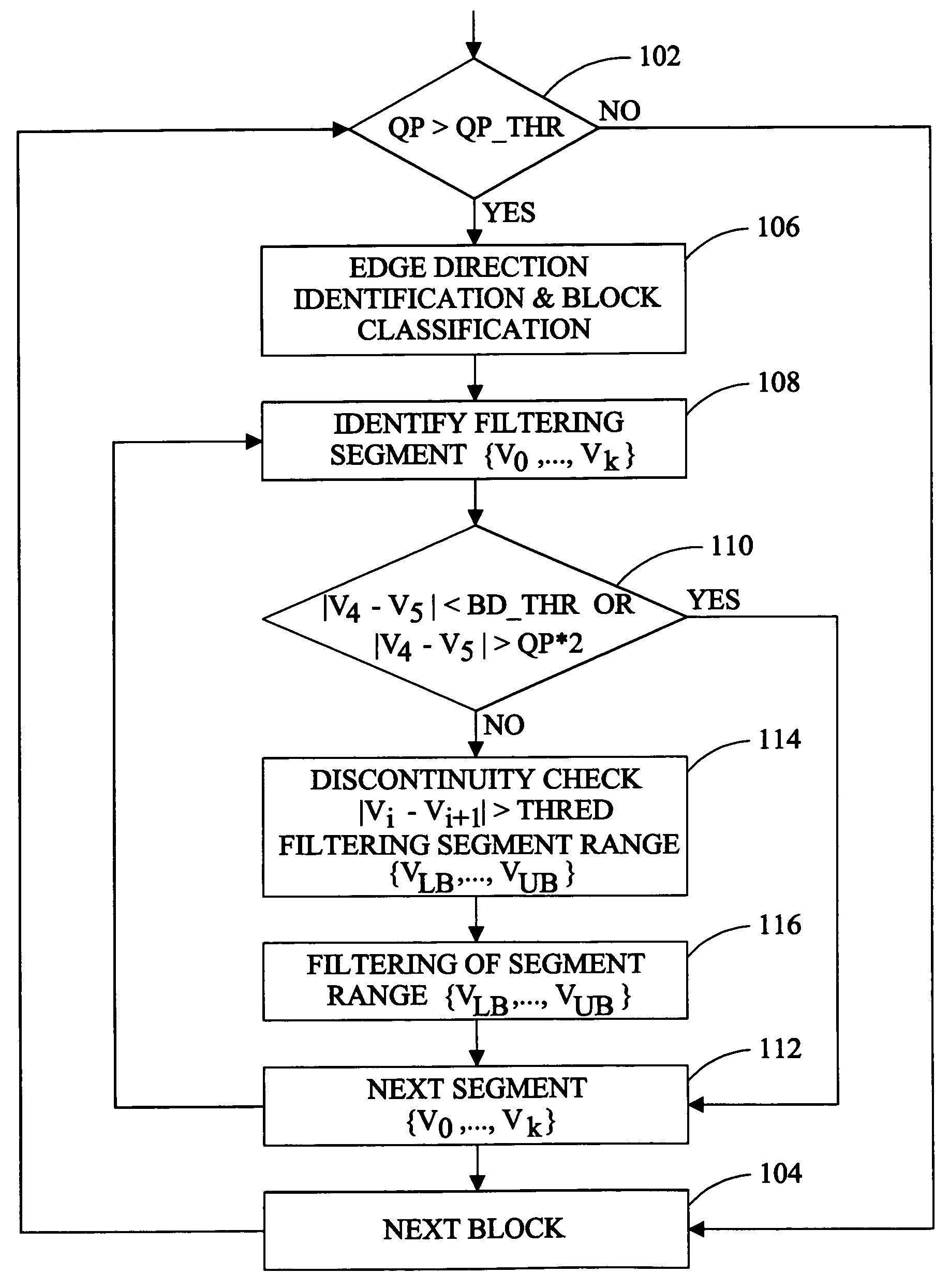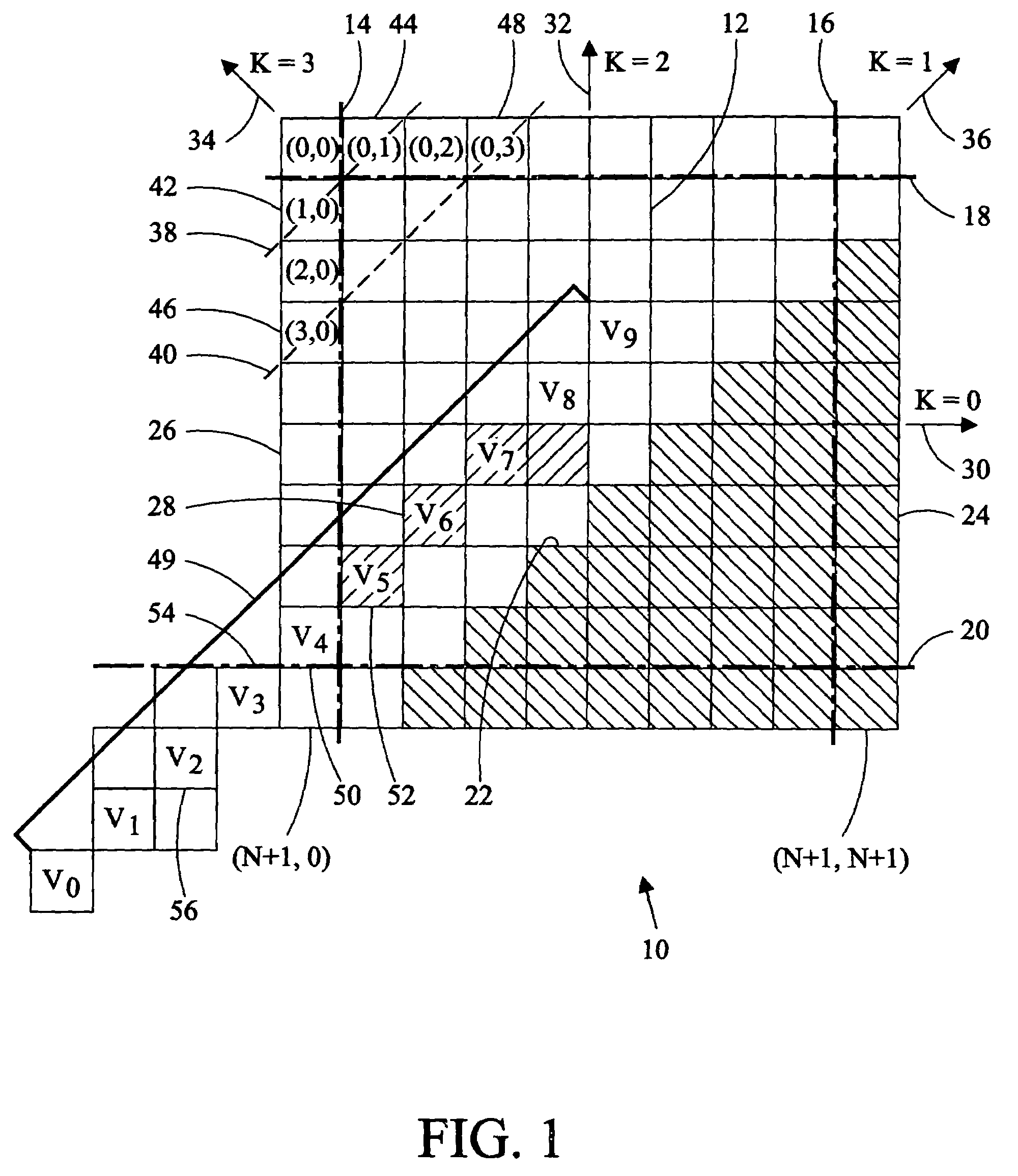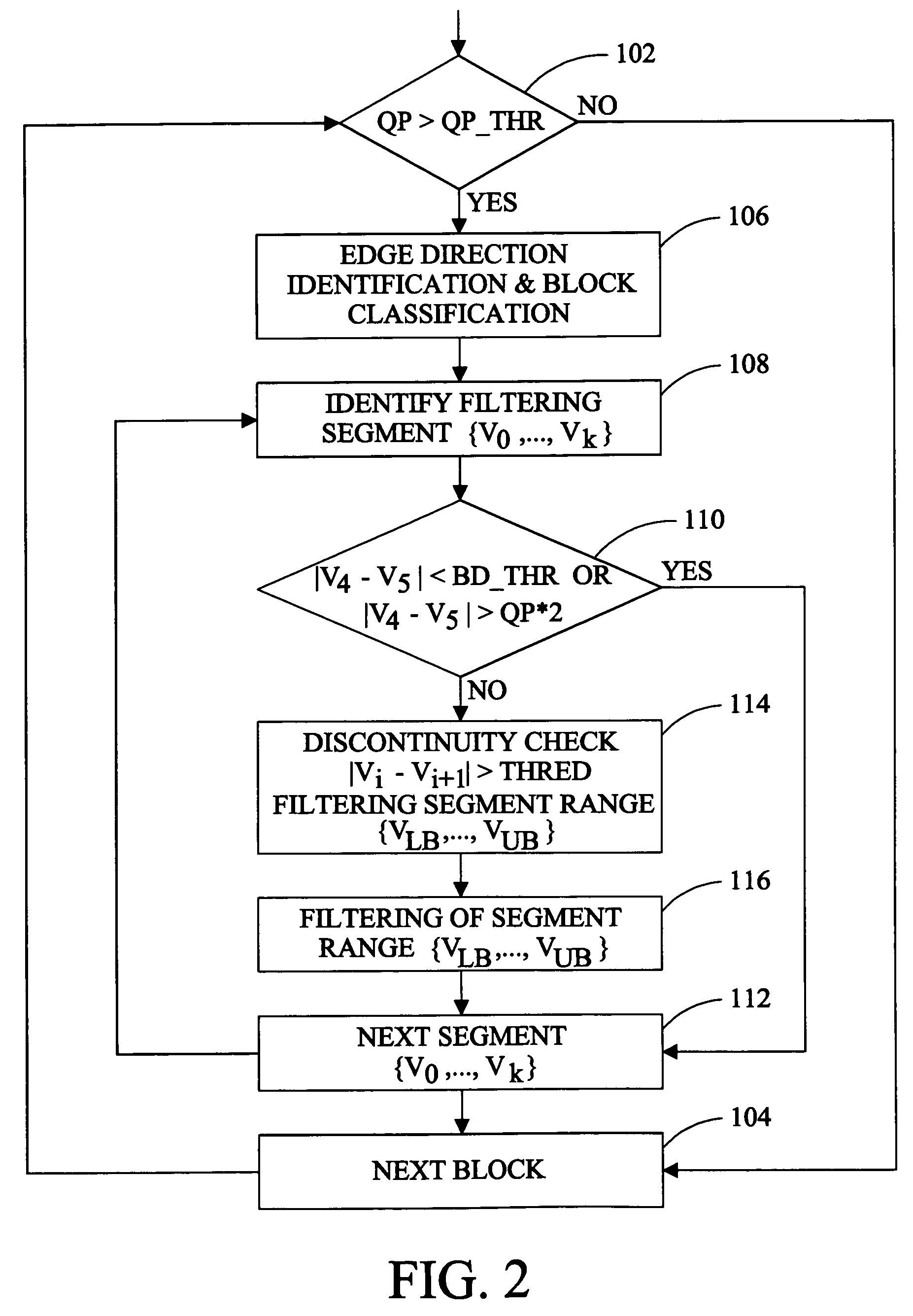Method of directional filtering for post-processing compressed video
a directional filtering and compressed video technology, applied in the field of post-processing compressed digital images, can solve the problems of limiting the usefulness of real-time video applications, staircase noise of compressed images, and all of these artifacts can be annoying to viewers of images, so as to reduce the impact of edge sharpness, avoid image complications, and save computational resources
- Summary
- Abstract
- Description
- Claims
- Application Information
AI Technical Summary
Benefits of technology
Problems solved by technology
Method used
Image
Examples
Embodiment Construction
[0011]In the transform coding process an N (pixel)×N (pixel) image is subdivided into n×n sub-images or blocks and the transform is applied to the individual pixels on a block by block basis. For example, in the Discrete Cosine Transform (DCT) compression process utilized by in the JPEG (ISO 10918) and MPEG-2 (ISO / IEC 13818) image compression processes the image is subdivided into 8×8 blocks for coding. FIG. 1 illustrates a portion of a larger image 10 that has been subdivided into blocks, such as the block 12 that is bounded by the block boundaries 14, 16, 18, and 20. Pixels outside of the area bounded by the block boundaries are pixels included in adjacent blocks. An image edge 22, formed by the boundaries of pixels of a first 24 and second 26 color divides the block 12 diagonally. It is understood that a block of pixels, as used herein, may be any plurality of pixels defining any pattern.
[0012]Decompressed images may exhibit several artifacts of the compression-decompression proc...
PUM
 Login to View More
Login to View More Abstract
Description
Claims
Application Information
 Login to View More
Login to View More - R&D
- Intellectual Property
- Life Sciences
- Materials
- Tech Scout
- Unparalleled Data Quality
- Higher Quality Content
- 60% Fewer Hallucinations
Browse by: Latest US Patents, China's latest patents, Technical Efficacy Thesaurus, Application Domain, Technology Topic, Popular Technical Reports.
© 2025 PatSnap. All rights reserved.Legal|Privacy policy|Modern Slavery Act Transparency Statement|Sitemap|About US| Contact US: help@patsnap.com



